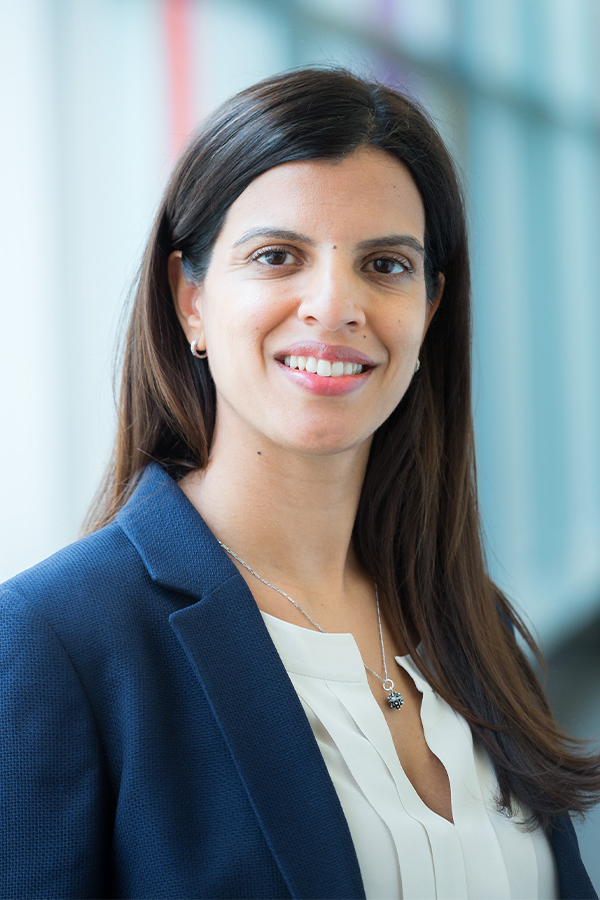Dr. Shazhan Amed is an investigator and pediatric endocrinologist at BC Children’s Hospital and a clinical professor at the University of British Columbia. Dr. Amed will be one of five panelists at the Women in Science event on Feb. 10, 2022.

My research is focused on childhood diabetes. It began with a strong interest in the prevention of type 2 diabetes through a community-based childhood obesity prevention initiative called Live 5-2-1-0, as well as using administrative health data to describe the rates of type 1 and type 2 diabetes in children and the quality of their care.
My research evolved when I started to use data to inform improvements to pediatric diabetes care. I started a provincial diabetes registry in 2017, and I also gathered outcome measures directly from patients, including barriers to accessing care, quality of life and patient satisfaction with care — which are really important to measure, but often get overlooked in our standard collection of clinical data.
More recently, I’ve been leading a project called TrustSphere that’s focused on innovation in pediatric diabetes care using technology. This is a large project with a very large team composed of investigators representing multiple disciplines (health, engineering, digital solutions, ethics and privacy), as well as the private sector. We are building a from-the-ground-up, customized digital tool, or app, for children living with diabetes. We want to optimize their care at home by integrating data in one place, sharing data with care providers and making care decisions collaboratively with the care team, not just at clinical visits, but continuously between appointments.
What excites me about TrustSphere is it’s scalable to beyond kids with diabetes. We hope our work with kids living with diabetes can be expanded and will potentially improve the lives of all children living with chronic diseases.
Type 1 and 2 diabetes in kids
It’s important to make the distinction between type 1 diabetes and youth-onset type 2 diabetes.
Type 1 diabetes is the most common form of diabetes in children and can be diagnosed as early as six months of age and as late as the early 20s. At this point, it’s not preventable. Children with type 1 diabetes are completely insulin-dependent. Their bodies no longer make insulin because of autoimmune destruction of the cells that produce insulin in the body.
Youth-onset type 2 diabetes is a newer form of diabetes in kids. Before 1980, this diagnosis was unheard of in children. But changes in our environment and the way we live — namely our choices around healthy living — have resulted in the emergence of type 2 diabetes in children and youth.
Kids with type 2 diabetes are not necessarily insulin-dependent and can be managed with lifestyle changes and oral medications. However, studies show that compared to adults, type 2 diabetes is a more severe disease in youth. Approximately 50 per cent of young people require insulin treatment, and nearly 40 per cent present with complications that include high blood pressure and high cholesterol, at an average age of only 14 years.
Managing diabetes with the help of technology
In the last five to seven years, we’ve seen technology move rapidly to aid in the management of diabetes. Kids now have access to glucose sensors and insulin pumps. Glucose sensors are small devices that sit on the skin and measure the glucose level in the interstitial fluid right under the skin. The sensor can generate a glucose level every one to five minutes that can be viewed on a smartphone. Now a parent can access that information every minute of the day — even while their child is at school — and take action to support their child’s diabetes management.
This is so empowering to both kids and their parents because this is the data that we depend on as clinicians, patients and families to make changes to insulin doses to prevent excessively high or low blood sugars. Maintaining good glucose control is critical to prevention of diabetes-related complications later on.
Clinical work, research, prevention and data
I’m a pediatric endocrinologist, so diabetes is my bread and butter in terms of what I do as a clinician.
When I was doing my master’s in public health and finished my clinical training, I did a national study of incidence of type 2 diabetes in Canada — the first study of its kind. We learned that almost all children and youth with type 2 diabetes were obese or overweight. That was an opportunity to intervene and actually prevent what would be a lifelong and potentially devastating disease for these young people. That’s where my passion around prevention really sprouted.
When I moved to Vancouver and took on my job at BC Children’s, I focused on prevention of onset of type 2, looking at what we can do in partnership with communities to create an environment that supports children and youth in making healthy choices, and making those choices easier. Our team has grown across the province and within different health organizations and it’s been an amazing experience.
I’ve always been interested in how to use data to improve care. Data is so powerful and we make many assumptions in medicine about what patients want, what works for them and what they consider a positive experience. I became passionate about collecting patient-reported outcomes in addition to all the data that’s available to us through clinical charts and using that data to shift and intervene in the system where it’s going to have the highest impact on patient experience.
Surround yourself with smart people
For every clinician, there’s a moment where you decide whether you want to pursue an academic career. If you’d asked me when I was in med school whether I wanted to be a researcher, my answer would have been no, absolutely not, not interested.
It’s people who you interact with who inspire you to stretch yourself. I had an amazing experience with a research supervisor during my residency and fantastic mentorship during my fellowship and with the national surveillance study — and success helps. I was able to gather really important data that got integrated into the Canadian guidelines on management of youth with type 2 diabetes. I saw the impact of the work and that was the hook for me. But the number one hook is the people you get to work with when you pursue an academic career.
When I was finishing my training, someone was encouraging me to pursue a PhD. I had just finished a master’s, I’d been in school for 13 years, my parents didn’t even understand why I wasn’t practicing as a doctor. I talked to another mentor who told me I didn’t need to do a PhD.
She advised me to surround myself with really smart people, and that’s what I did. I was a sponge, I asked a lot of questions and I learned from the people around me — and that continues today.
My learning curve with TrustSphere is steep. I’m constantly learning from the smartest people in this organization, in this country and beyond.
Gratification
Besides the people, the most gratifying part of my work is seeing the impact.
With the Live 5-2-1-0 initiative, which I started over a decade ago, I can’t even believe how far we’ve come. But the moments when my heart is so warm and so happy are when we’re in our retreats with all of the communities who are implementing our work, and I get to listen to the stories of how our collaborations have impacted the lives of children. To me, that is the ultimate goal.
Similarly, we have a patient and family advisory board for the work I do in diabetes. I was on a call with one of the members of the advisory board yesterday, and she shared with me the challenges of raising a child living with diabetes. She expressed how grateful she was to participate on the advisory board, to be engaged in the conversation to improve the lives of children with diabetes and — most importantly — to be listened to.
It’s those moments when you learn your work is directly impacting and improving patients’ and families’ lives that matter most.
As a researcher, you don’t always get to see that direct impact. I’m lucky because I’m a clinician as well as a researcher.
Advice for young women considering a career as a clinician-researcher
Hang in there. I started my career in science in my early thirties, right at the same time I was building a family. It was hard. You’re on maternity leave, but your research keeps going. I might have had a locum covering my clinical work, but no one was doing my research, and that required a commitment from me, and it wasn’t easy.
I believe in trying to find balance and that it’s important for us as women to persevere through those hard years when you have multiple responsibilities, both personally and professionally, because the payoff is huge. I’m so glad that I didn’t step out of the game, because you will ask yourself if this is really what you want.
That being said, you’ve got to love it. If you love it, if you’re passionate about it, it will feel easy. If it doesn’t feel that way, then look for something different, either a different focus, a different team, or a totally different trajectory.
The last piece of advice is when doors open for you, peek through them. I don’t go through every open door, but I look at the opportunities. If I didn’t peek through that door when Tibor van Rooij, lead of the Digital Health Research initiative at BC Children’s, walked in my office, I would have missed out on an amazing opportunity with TrustSphere.
Look at those opportunities and if something excites you, go with your gut. If it’s going to be extra work, that’s OK, because it’s going to pay off.
Join us virtually as we celebrate International Day of Women and Girls in Science
Thursday, Feb. 10, 2022
Click here for event details
Registration is open to high school students, university students, the health science community and the general public. The curriculum and discussion will be targeted for a grade 10–12 education level.
Registration will be accepted on a first-come, first-serve basis. Space is limited to 200 participants.
To read more profiles and keep on top of the latest research in child health, be sure to follow us on social media:




